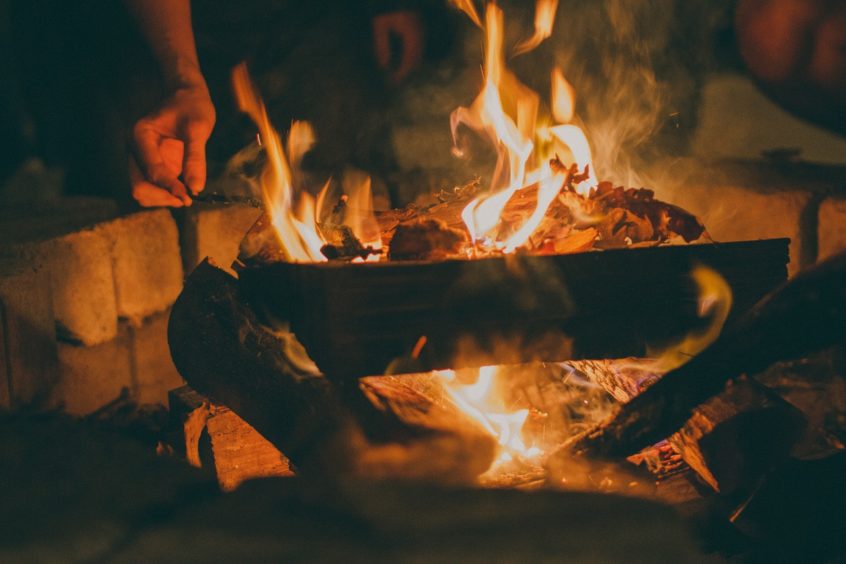As spring turns into summer and certain travel restrictions are still in place, more people are enjoying spending their evenings in the yard relaxing by a fire. If you are considering installing a fire pit in your yard–permanent or portable–there are a few fire pit safety tips you should familiarize yourself with first.
Preparing the Space
A fire pit should be at least 10 feet (preferably more like 25 feet) away from any flammable structure. You should always place a fire pit on a non-flammable surface, such as patio blocks or concrete. When constructing your fire pit, consider these tips:
- Do not position a fire pit under a covered porch or low hanging tree branches
- Do not put a fire pit on a wooden deck or directly on grass
- It should be at least 6 inches deep at the center and 2 feet across
- Surround the put with dirt or rocks prevent any fire on the ground from escaping.
- Clear any flammable before using your fire pit to prevent spreading. This includes vegetation or grass directly around the pit.
Igniting the Fire
Before you start your fire, be aware of any wind and the direction it is blowing. If you need to, remove flammable materials that are downwind. This is fire pit safety 101. If you feel like it is too windy, don’t light the fire. You should NEVER use lighter fluid, gasoline, or other flammable liquids to light a fire pit. Lighter fluid is unstable and unpredictable. If you have trouble staring your fire, try a commercial fire starter or kindling.
Using Your Fire Pit
Once your fire is lit, it is important to stay alert and pay attention to its actions. Follow these guidelines:
- Do not leave a fire pit unattended–especially around children or pets.
- Invest in a wire mesh to prevent embers from escaping and prevent falls or accidents
- Only use the fuel you need. Add wood or other burning materials only as necessary to keep the fire burning
- Speaking of burning materials, do not burn garbage or paper products. These can spark, throw off embers, or blow out of the fire
- Keep a hose or container of water nearby in case of accidents.
Extinguishing Your Fire Pit
Properly extinguishing your fire is very important. Many accidents occur from fires that were not completely put out. When your fire is over, drown it in water and stir it with a shovel to make sure it is fully extinguished. Do not put your ashes in a compost pile or combustible container. After the ashes have cooled, dispose of them in a metal can to prevent fire spread. (did you know ashes can be hot enough to start fires days after the fire burns out?)
While following stay-at-home regulations and socially distancing, enjoying an evening by the fire is a popular recreation. Follow these fire pit safety guidelines to safely install, use, and maintain your fire pit, and you’ll never need to worry about damaging your home.

